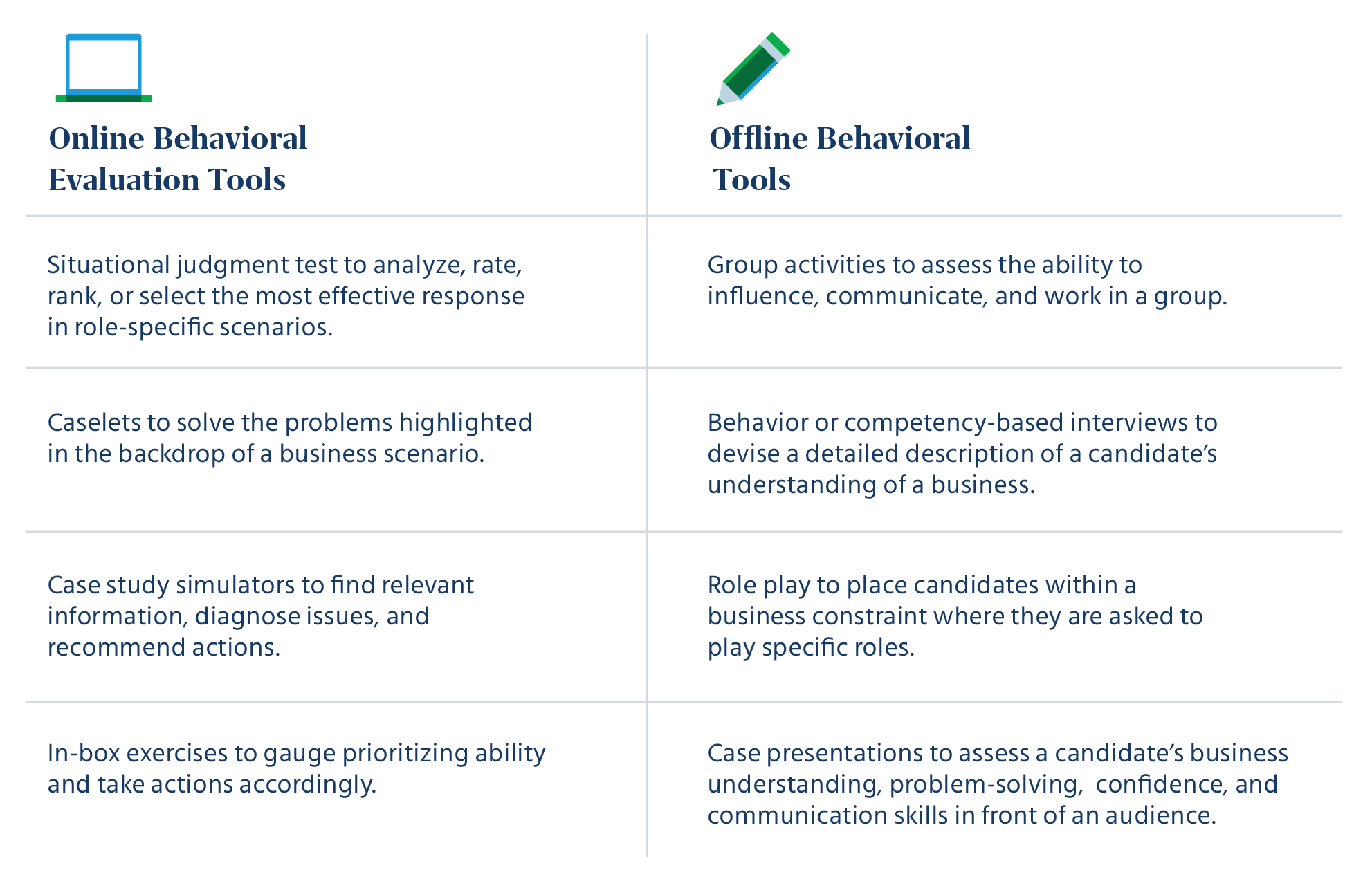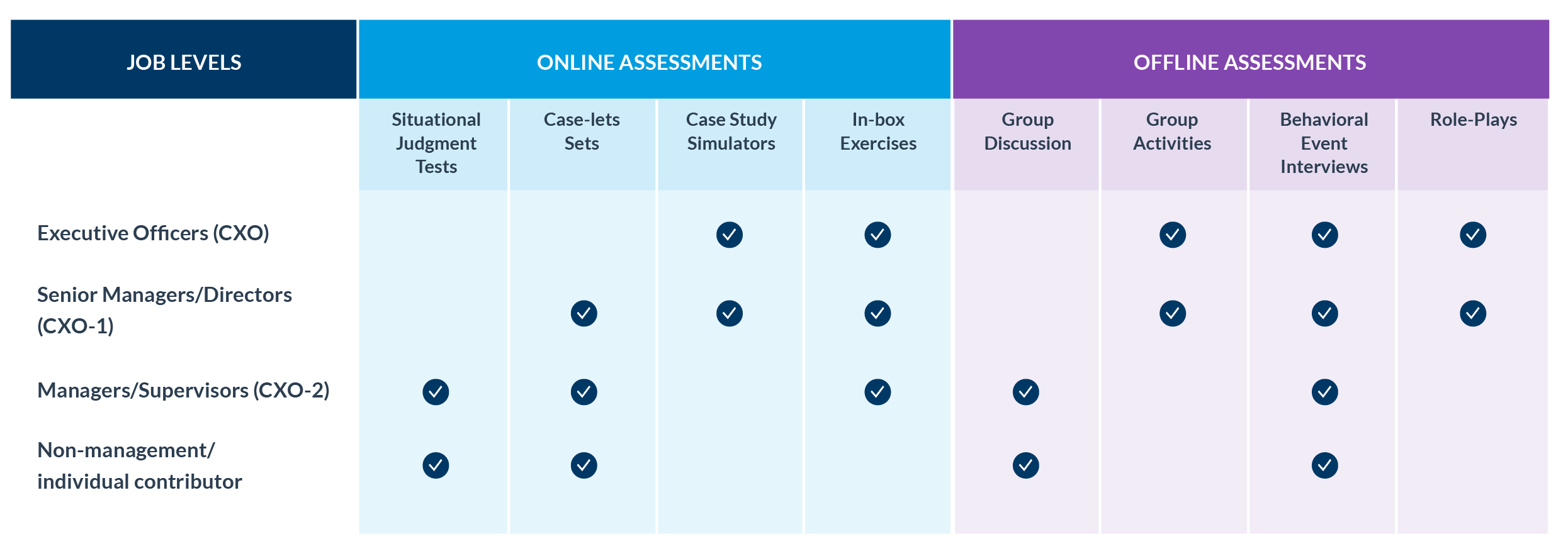Traditional recruitment incorporates some form of behavioral interviewing. These interview questions are based on resumes that don’t offer the necessary information to make objective hiring decisions or even to ask the right questions. Individuals applying for a job may communicate differently, respond to situations differently, thrive in varied environments, react to various stimuli, and respond to distinct management styles. A candidate who is a right fit for the job and the organization will flourish and grow, while an unsuitable candidate might feel disengaged and frustrated. These things are difficult to measure through a simple behavioral interview.
This is where behavioral assessments make their mark. They provide an in-depth understanding of the candidate’s preferences to predict if they are the right fit. Behavioral assessments help in screening and selecting the right candidates, thereby delivering a driven user experience. Since behavioral assessments closely emulate the job role and organization setting, they additionally empower candidates to make the right choice. Combined with behavioral event interviews or competency-based interviews, workplace behavioral assessments lead to an accurate representation of the candidate.
The success of any organization largely depends on its people. If you put the right people in the right jobs, they are more likely to perform well and propel the organization towards success.









 Behavioral Competencies
Behavioral Competencies Cognitive Competencies
Cognitive Competencies Coding Competencies
Coding Competencies Domain Competencies
Domain Competencies





























